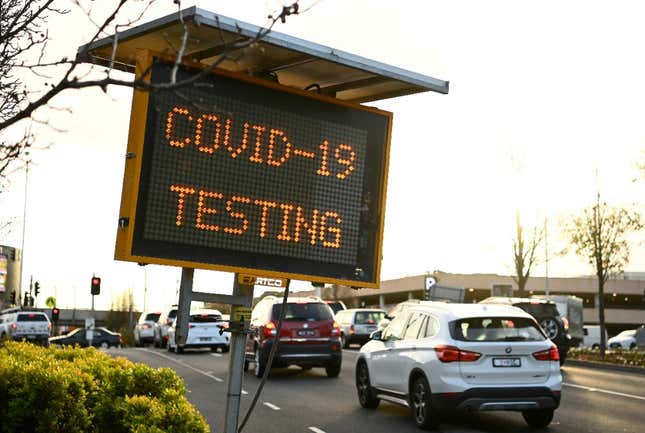
It often feels like everything bad that happens in America disproportionately affects communities of color, and the global pandemic that continues to spread across the country has shown us nothing different. Despite the numerous reports that show Black and Hispanic people are at greater risk for COVID-19 infection, a recent review on COVID-19 testing sites suggests that white neighborhoods have significantly better access to testing facilities and have much shorter wait times than Black and Hispanic neighborhoods.
The analysis was conducted by the 7 On Your Side Investigates data team, ABC News and FiveThirtyEight, and it found that in major cities, the availability of testing centers depends on where you live and how much money you make. The nationwide review is among the first to look at testing site locations in all 50 states plus Washington, D.C., using data provided by the healthcare navigation company Castlight Health which, provides the same data that Google Maps uses to identify COVID-19 testing sites. As in all things, generally affluent and white neighborhoods have the advantage while lower-income minority neighborhoods get the short end of the stick.
From 7 On Your Side:
The New York Metro Area ranked among the top 10 major US cities with testing disparities, behind other cities such as Philadelphia, Miami and Dallas.
In New York City specifically, we looked at nearly 400 testing sites active through at least June 18 and found predominantly black and Latino communities were likely to face testing sites up to 26% busier than testing sites in communities with a greater percentage of white residents.
We found a greater concentration of testing sites per capita in wealthier areas of Manhattan reducing the likelihood of long waits for tests, compared to certain predominantly minority communities in parts of Queens, Brooklyn and the Bronx.
Researchers for the analysis used Census data to determine the potential demand at each testing site, and they looked at the demographics of the surrounding neighborhoods to determine where the disparities are and who is impacted by them the most.
Researchers also analyzed testing results by zip code using data provided by the New York City Department of Health. “That data revealed that several of the same neighborhoods in which our analysis found residents would be more likely to experience busy test centers, also saw fewer individuals obtaining tests but higher coronavirus positivity rates among individuals who did get tested,” News 7 reports.
Elisabeth Benjamin, vice president of Health Initiatives for the Community Service Society of NY—an organization that focuses on putting an end to disparities in healthcare access, told New 7 that “These disparities didn’t just materialize out of thin air.”
“These disparities occurred by design and that is what we call structural racism,” Benjamin added. “There is no biological or genetic reason for communities of color to be disparately impacted by the pandemic. What is true is that communities of color have less access to healthcare resources. We and New York State really have to do some soul searching about how we allocate our resources.”
According to FiveThirtyEight, predominantly Black neighborhoods in Philadelphia have seen similar racial disparities to that of NYC.
In early April, pediatric surgeon Dr. Ala Stanford began personally distributing COVID-19 tests in the Philly neighborhoods that needed them the most. She eventually teamed up with a group of doctors and volunteers called the Black Doctors COVID-19 Consortium to help meet the medical needs of underserved communities.
“We’ve been to locations that are predominantly African American where everyone had insurance and they couldn’t get tested,” Stanford said, noting that many testing facilities require doctor referrals, appointments and symptoms consistent with COVID-19 infection.
In May, NPR conducted a similar study that focused on the state of Texas. Investigators looked at the distribution of testing centers in the state’s six largest cities—Dallas, El Paso, Austin, Fort Worth, San Antonio and Houston—and found that in four of those cities (all except San Antonio and Houston), there were vastly more testing centers located in white neighborhoods. The largest disparity was found in Dallas where 22 testing locations were found in neighborhoods that are “whiter than city median” while neighborhoods that are “less white than city median” only had seven testing locations.
According to News 7, New York City Health Commissioner Dr. Oxiris Barbot put things plainly when he addressed the racial disparities in testing access earlier this month during a press conference in the Bronx.
“When you have low testing but high positivity, that high hit-rate indicates we need to test more people,” Dr. Barbot said. “We need to make it easy as possible for people to get tested.”
Join the discussion! The Root is hosting its first-ever, virtual Root Institute, presented by Target, featuring several of the leading minds in our community talking about politics, culture, health, community building and social impact. Subscribe for updates today!

